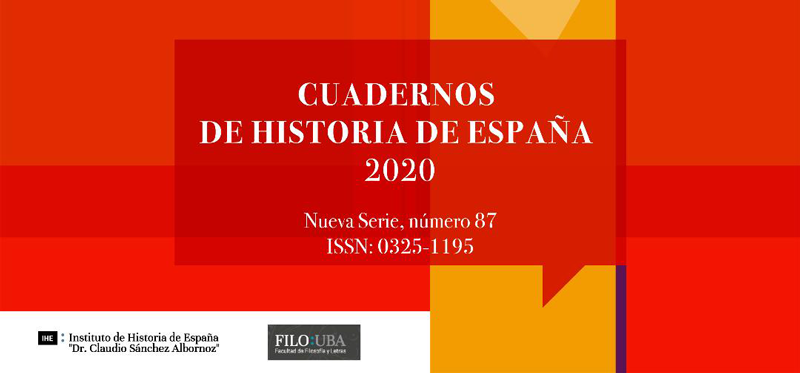More is more. A “Venturian” rereading of 15th and 16th centuries Spanish architecture from the Avellaneda Palace
Keywords:
Architecture, First Renaissance, Avellaneda Palace
Abstract
The architecture of the so-called “first Spanish Renaissance” is characterized by the combination of elements of medieval origin (either Gothic or Mudejar) with the new influences of the Italian Renaissance. Until here, we have mentioned a well-known topic, but coincidentally, from two recent visits to an outstanding example, the Avellaneda Palace, emerged a series of reflections about the period and its treatment in the historiography that we propose to share. These works have traditionally been interpreted as phenomena where traces of the medieval past are projected into a present marked by Renaissance. On the contrary, we understand that the Mudejar elements are not a trace or shadow of a past phenomenon, but rather a component present in Spanish culture whose features, far from being accessory or superficial, define the structure from which these buildings have been conceived. Avellaneda Palace reflects this problem in a surprisingly clear way, communicating the complexity and contradiction of a two-faced society. Communication, complexity, contradiction. It is obvious that this approach would not be possible without the contribution of the recently deceased Robert Venturi, so we propose a “Venturian” rereading of the work and its period.Downloads
Download data is not yet available.
References
Byne, A. (1917). Spanish architecture of the sixteenth century; general view of the plateresque and Herrera styles. Nueva York: G. P. Putnam’s Sons.
Carazo, E. (1997). El Palacio de los Condes de Miranda en Peñaranda de Duero. Boletín de la Academia de Bellas Artes de San Fernando, 87, 505-544.
Castillo Oreja, M. A. (1985). La proyección del arte islámico en la arquitectura de nuestro primer renacimiento: el estilo Cisneros. Anales del Instituto de estudios madrileños, 22, 55-63. Madrid: C.S.I.C.
Castro, A. (1948). España en su historia. Cristianos moros y judíos. Buenos Aires: Losada.
de los Ríos, J. (1872). El estilo mudéjar en la arquitectura. Madrid: Imprenta de Manuel Tello.
Fox, I. (1997). La invención de España. Nacionalismo liberal e identidad nacional. Madrid: Cátedra.
González Ferrín, E. (2018). Cuando fuimos árabes. Córdoba: Almuzara.
Kamen, H. (2020). La invención de España. Madrid: Espasa.
Lampérez y Romea, V. (1922) Arquitectura Civil Española de los siglos I al XVIII. Madrid: Saturnino Calleja.
Lampérez y Romea, V. (1912). El Palacio de los Condes de Miranda en Peñaranda de Duero. Boletín de la Sociedad Española de Excursiones, XX, 146-151.
López Baralt, L. (1985). Huellas del Islam en la literatura española. De Juan Ruiz a Juan Goytisolo. Madrid: Hiperion.
Martínez Montero, J. (2005). La escalera del Palacio de los Condes de Miranda en Peñaranda de Duero, Burgos. De Arte, Revista de Historia del Arte, 4, 75-87.
Martínez Nespral, F. (2007). Un juego de espejos. Rasgos mudéjares de la arquitectura y el habitar en la España de los Austrias (siglos XVI-XVII). Buenos Aires: Nobuko.
Martínez Nespral, F. (2017). Islamic footprints in Latin American Architecture. Ponencia inédita presentada al Congreso Annual de la College art Association, Nueva York.
Martínez Nespral, F. (2018). Architectural links between the Islamic world and Latin America. Módulo docente realizado para la red Global Architectural History Teaching Collaborative, disponible on-line en www.gahtc.org
Martínez Nespral, F. (2020). Nuestro cercano Oriente. Rasgos Islámicos de la arquitectura y la ciudad en Latinoamérica. En: Loredo, R. y Lara, F., Apuntes sobre decolonización, arquitectura y ciudad en las Américas México, Colofón (en prensa).
Ortega y Gasset, J. (1921). España invertebrada. Madrid: Espasa Calpe.
Taboada, H. (2004). La sombras del Islam en la conquista de América. México: Siglo XXI.
Todorov, T. (2007 [1989]). Nosotros y los otros. México: Siglo XXI.
Venturi, R. (1968 [1966]). Complexity and contradiction in contemporary architecture. Nueva York: The Museum of Modern Art papers on Architecture.
Carazo, E. (1997). El Palacio de los Condes de Miranda en Peñaranda de Duero. Boletín de la Academia de Bellas Artes de San Fernando, 87, 505-544.
Castillo Oreja, M. A. (1985). La proyección del arte islámico en la arquitectura de nuestro primer renacimiento: el estilo Cisneros. Anales del Instituto de estudios madrileños, 22, 55-63. Madrid: C.S.I.C.
Castro, A. (1948). España en su historia. Cristianos moros y judíos. Buenos Aires: Losada.
de los Ríos, J. (1872). El estilo mudéjar en la arquitectura. Madrid: Imprenta de Manuel Tello.
Fox, I. (1997). La invención de España. Nacionalismo liberal e identidad nacional. Madrid: Cátedra.
González Ferrín, E. (2018). Cuando fuimos árabes. Córdoba: Almuzara.
Kamen, H. (2020). La invención de España. Madrid: Espasa.
Lampérez y Romea, V. (1922) Arquitectura Civil Española de los siglos I al XVIII. Madrid: Saturnino Calleja.
Lampérez y Romea, V. (1912). El Palacio de los Condes de Miranda en Peñaranda de Duero. Boletín de la Sociedad Española de Excursiones, XX, 146-151.
López Baralt, L. (1985). Huellas del Islam en la literatura española. De Juan Ruiz a Juan Goytisolo. Madrid: Hiperion.
Martínez Montero, J. (2005). La escalera del Palacio de los Condes de Miranda en Peñaranda de Duero, Burgos. De Arte, Revista de Historia del Arte, 4, 75-87.
Martínez Nespral, F. (2007). Un juego de espejos. Rasgos mudéjares de la arquitectura y el habitar en la España de los Austrias (siglos XVI-XVII). Buenos Aires: Nobuko.
Martínez Nespral, F. (2017). Islamic footprints in Latin American Architecture. Ponencia inédita presentada al Congreso Annual de la College art Association, Nueva York.
Martínez Nespral, F. (2018). Architectural links between the Islamic world and Latin America. Módulo docente realizado para la red Global Architectural History Teaching Collaborative, disponible on-line en www.gahtc.org
Martínez Nespral, F. (2020). Nuestro cercano Oriente. Rasgos Islámicos de la arquitectura y la ciudad en Latinoamérica. En: Loredo, R. y Lara, F., Apuntes sobre decolonización, arquitectura y ciudad en las Américas México, Colofón (en prensa).
Ortega y Gasset, J. (1921). España invertebrada. Madrid: Espasa Calpe.
Taboada, H. (2004). La sombras del Islam en la conquista de América. México: Siglo XXI.
Todorov, T. (2007 [1989]). Nosotros y los otros. México: Siglo XXI.
Venturi, R. (1968 [1966]). Complexity and contradiction in contemporary architecture. Nueva York: The Museum of Modern Art papers on Architecture.
Published
2020-11-30
How to Cite
Martínez Nespral, F. L. (2020). More is more. A “Venturian” rereading of 15th and 16th centuries Spanish architecture from the Avellaneda Palace. Cuadernos De Historia De España, (87), 143-158. https://doi.org/10.34096/che.n87.9052
Issue
Section
Artículos









.png)












.png)
.png)
.png)








